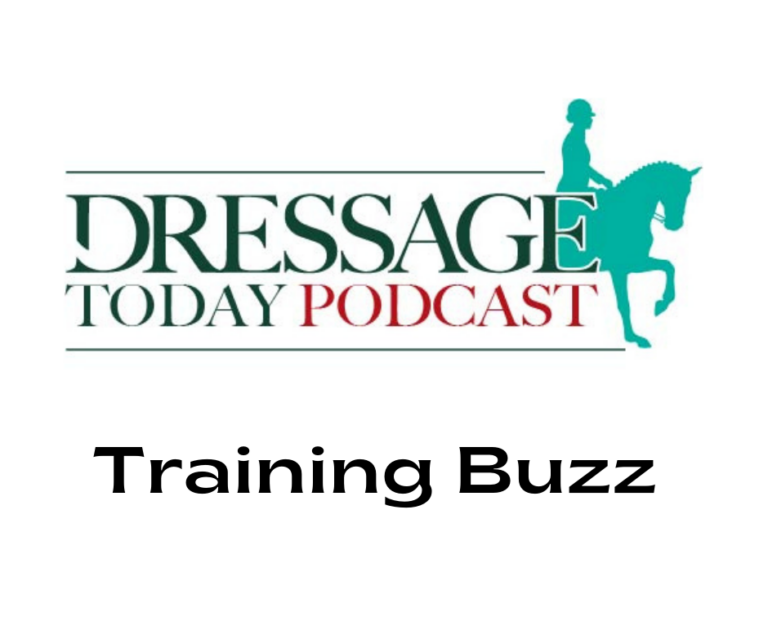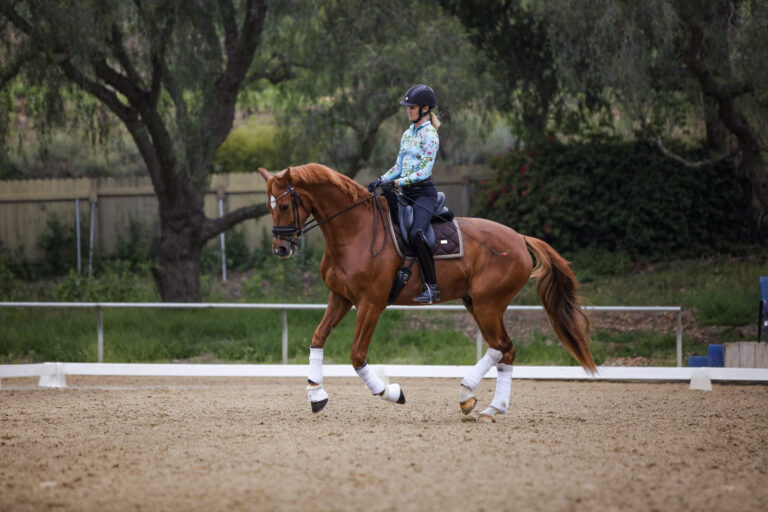I wish I’d known when I began dressage the importance of correct timing of the aids and how necessary it is to develop an understanding of the biomechanical footfalls of the horse.
Discovering how important the timing of our aids is begins when a novice rider learns to post on the correct diagonal at the rising trot. The rider learns to feel where the horse’s outside shoulder is when she posts on either the right or left diagonal. (The rider posts when the horse’s outside shoulder goes forward during trot.) It progresses as the rider learns the different footfalls of the gaits and the aids.

Many struggle with obtaining a correct canter lead. Sometimes it is because a green horse has a favorite, more comfortable lead, but many times it is because the rider did not apply the aid at the correct time. If you are working on the left rein at the trot, the best time to influence a horse’s canter depart is when his left diagonal pair of legs is on the ground. The canter is a three-beat movement. The first beat is the outside hind, the second is the outside diagonal pair and the third is the leading leg. Logic implies that if you are at the trot, you should apply the canter aid when the outside hind is on the ground (the inside diagonal) because the next step in the canter stride is the outside diagonal, then the leading leg. In a walk-to-canter transition the timing of the aids is different since the walk is a four-beat movement. Here you need to develop a feel for how the horse’s belly muscles swing against your calf so you can ask as the inside hind leg is bearing weight.
When it comes to downward transitions—for example, trot to walk or trot to halt—we always want to teach our horse to adjust his balance forward into a square halt. You must develop a feel for where the horse’s legs are underneath you and learn to apply this downward-transition aid as the outside hind leg hits the ground. On the centerline you must determine which aid gives him the best result. It takes time to develop feel. Upper-level riders have developed such a feel that it is automatic to them. If you are a novice rider, however, you must think ahead and prepare so you give the aid clearly and the horse receives and understands your aid and responds. This means that if you ride a downward transition at a certain letter, three strides before the letter think: prepare to walk or halt, whatever the question is. The same applies to upward transitions.
In a leg yield, where you are asking your horse to move away from your leg, apply your inside leg not as a constant force but in rhythm every time the horse’s inside hind leg is in the air. That is the leg you wish to influence so that the horse steps forward and under his body. Of course, your outside leg is there to make sure the haunches do not lead, and your rein aids must be correct for positioning and alignment, but here we are discussing the correct timing of the aids. If you want your horse to move his leg away from your leg aid, you have a much better chance of him doing so if his weight is not on that leg.
In trot half pass the same methodology applies, but because the bend is different (into the direction of travel), apply the aid when the outside hind leg is in the air. Remember, when referring to “inside,” it is always in the direction of the horse’s bend. If all of this sounds complicated, simply close your eyes as you ride and feel how your seat or your knee drops a little left/right at the trot, as each diagonal alternately bears weight. In free walk, where the horse has complete freedom of his head and neck and is swinging over his back, feel the swing through his belly muscles. Have someone stand on the ground and help you if it is strange to you. Take the time to learn to feel what the horse is doing as he moves. It will help you to advance your riding skills. Your horse has four legs, and you need to know where they are underneath you. It is classical Spanish Riding School technique, and I am grateful that I was able to work with Karl Mikolka many years ago, as he is a true master who instilled in me the importance of feel and correct timing of the aids.

Loris Henry is a USDF “S” judge, a USEF “R” eventing judge, an FEI 3- and 4-star eventing judge and has earned a USDF bronze and silver medal. She began her career by obtaining her British Horse Society assistant instructor certificate at Burton Hall in Ireland. The first woman president of the United States Eventing Association, she has served many years on the USEF Eventing Technical Committee in addition to serving as president of the California Dressage Society. She is on the board of directors of the Monterey Horse Park in California and serves on the USEA Officials Committee.











